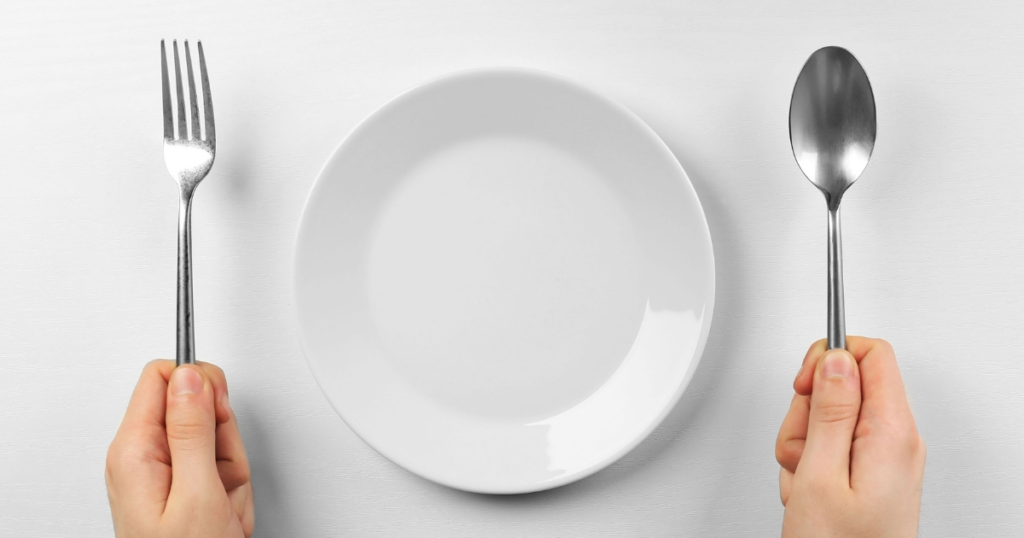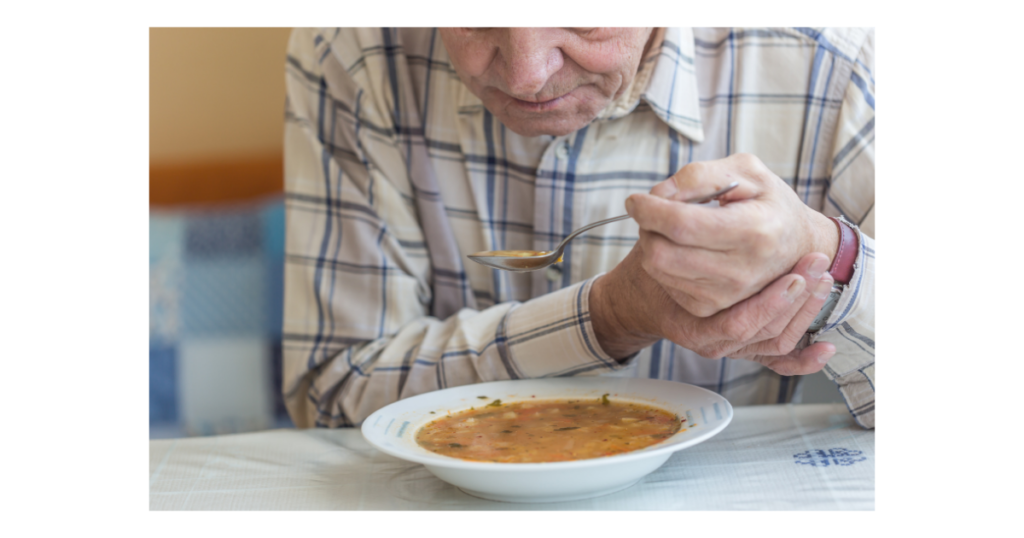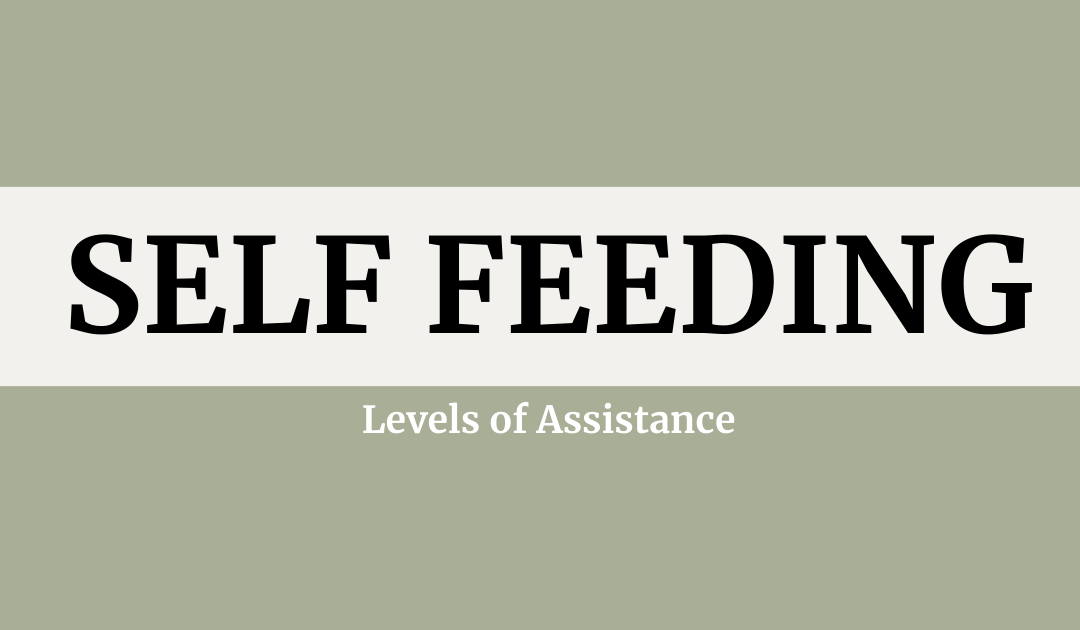Occupational therapists tailor their interventions based on the specific needs and abilities of each individual. The goal is to promote independence and improve the quality of life by enabling individuals to participate in the essential activity of self-feeding to the best of their abilities. Self-feeding is part of a broader set of self-care skills. For goal setting or tracking progress with a certain task, it is important to understand how to appropriately determine the level of assistance a person requires.

General Definitions
| Independent | Patient is able to complete 100% of the task WITHOUT physical assistance, prompts/ cues, or adaptive equipment. |
| Modified Independent | Patient is able to complete 100% of the task without physical assistance, prompts/ cues, WITH use of adaptive equipment, DME or other modifications. |
| Setup/ Cleanup | Patient is able to complete 100% of the task once items are placed in front of them and containers are open. May also require assistance putting items away or disposing of items after use. |
| Supervision/ Touch | No physical assistance is provided however, prompts or cues are provided in order to safely or effectively complete task. Supervision: therapist able to stand more than an arm’s length away, only verbal and/ or visual cues provided. Standby Assistance: therapist may safely stand an arm’s length away, NO physical contact with patient, verbal and/ or visual cues and prompts are provided. Contact Guard Assistance: therapist has contact or light touch with the patient at all times; verbal, visual, and/ or tactile prompts are provided. |
| Minimum Assistance | Therapist provides 25-50% physical assistance. Patient is able to complete at least 50% of the task. |
| Moderate Assistance | Therapist provides 25-50% physical assistance. Patient is able to complete at least 50% of the task. |
| Maximum Assistance | Therapist provides >75% physical assistance. Patient is able to complete at less than 25% of the task. |
| Total Assistance/ Dependent | Patient is unable or unwilling to initate or participate in any part of the task. |
Level of Assist Breakdown for Self Feeding

Independent:
Individuals at this level can manage all aspects of self-feeding without any physical or cognitive assistance and without use of adaptive equipment. The patient can select and cut their food, use non-modified utensils effectively, and bring food to their mouth safely. The role of the occupational therapist is primarily to monitor for any potential issues and provide occasional guidance or recommendations for adaptive equipment if needed.
Ex: Patient demonstrated independence with self feeding during breakfast, able to manage all containers and utilize appropriate utensils to consume a full meal while seated in a chair without armrests.
Modified Independence:
Some patients may have the cognitive or physical capacity to self-feed independently with modifications. This may involve using adapted utensils, specialized plates, or built-up handles to compensate for physical limitations. Occupational therapists assess the need for and provide appropriate adaptive equipment.
Ex: During session, the patient demonstrated modified independent level with self feeding tasks while seated in wheelchair and when provided with plate guard, rocker knife, and fork with built-up handle.
Setup/ Cleanup Assistance:
The OT arranges the dining table and utensils to accommodate the client’s reach, visual field, and accessibility. This may involve adjusting the table’s height, ensuring proper distance from the client, and positioning the meal components within easy reach. This may also include opening containers or packets.
Ex: Patient able to complete self feeding tasks with setup assistance, therapist positioned plate, utensils and cup within reach and provided assistance with opening condiment packets.
Supervision/ Touch Assistance:
Patients in this category can self-feed safely but may require occasional visual, verbal, or tactile cues to ensure they maintain proper posture, use utensils correctly, or manage any special dietary needs. The therapist’s role is to oversee and provide guidance as needed to prevent accidents or complications. Some facilities further break down supervision/ touch into 3 categories: supervision, standby, and contact guard assistance (see above).
Ex: Supervision provided during self feeding tasks with verbal prompts provided intermittently to adhere to aspiration precautions.
Minimum to Moderate Assistance:
Individuals who fall into this category can participate in self-feeding but require some level of hands-on assistance. The therapist may help with setup, utensil manipulation, cutting food, or prompting the individual to take bites. The goal is to promote as much independence as possible while addressing specific challenges.
Ex: Patient required minimum assistance with self feeding tasks when provided with built up handle and plate guard, patient able to scoop food but requiring assistance with guiding hand to mouth due to UE strength deficits.
Maximum Assistance:
This level of assistance entails the therapist physically guiding the patient’s hand (providing 75% or more physical assistance) throughout the self-feeding process. It is typically used with individuals who have significant motor deficits or cognitive impairments. The therapist ensures that the person can safely and effectively self-feed while offering the necessary physical support.
Ex: Patient requires max assistance for self feeding due to UE coordination and strength deficits as well as poor instruction follow-through. Therapist provided hand-over-hand facilitation and guiding for scooping food and bringing to mouth.
Total Assistance/ Dependent:
In cases where individuals are unable to self-feed even with significant support, occupational therapists work closely with nursing staff or caregivers to provide total feeding assistance. This may involve feeding the individual entirely or managing feeding through a feeding tube, if applicable.
Ex: Patient requires total assistance with self feeding tasks, therapist provided education to support staff regarding reducing distractions in room, pacing of meal and proper positioning of the patient.

Reminders
- Self feeding begins once the food is in front of the patient. Preparation and bringing meals to/from the table is considered part of the IADL meal preparation/ cleanup.
- Self feeding does not take into account oral motor and swallowing skills, these skills are addressed by speech-language pathologists in most settings. Occupational therapists require a specialty certification to address these factors.
- Diet texture and liquid consistency should be considered when recommending adaptive equipment and determining interventions for self feeding. However, occupational therapists without specialty certifications for swallowing do not make adjustments or recommendations for diet or liquid texture/ consistency.
